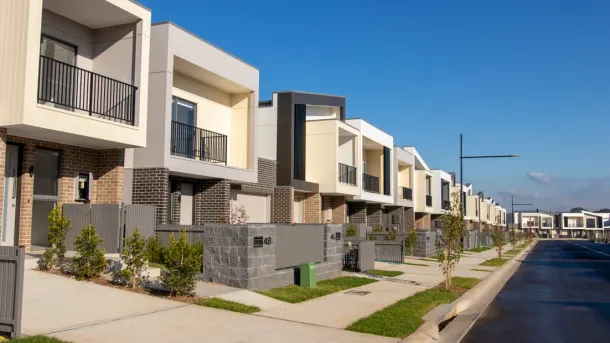Actuarial careers
Industry topics

Claim your CPD points
We acknowledge all First Peoples of the beautiful lands on which we live and celebrate their enduring knowledge and connections to Country. We honour the wisdom of, and pay respect to, Elders past and present.
National NAIDOC Week celebrations are held across Australia in the first week of July each year and this year represents a particularly powerful milestone. In the words of the NAIDOC Week Committee:
“50 years of honouring and elevating Indigenous voices, culture, and resilience. The 2025 theme, ‘The Next Generation: Strength, Vision & Legacy’, celebrates not only the achievements of the past but the bright future ahead, empowered by the strength of our young leaders, the vision of our communities, and the legacy of our ancestors.“
In the theme of elevating Indigenous voices and resilience, we share a project by Finity’s Sharanjit Paddam and Finity’s climate team, where they embarked on a project to support the NSW Aboriginal Housing Office (AHO) in its work to develop resilience in Indigenous housing.
The NSW Aboriginal Housing Office (AHO) is responsible for planning and administering the policies, programs and asset base for Aboriginal public housing in NSW.
The AHO’s vision is to ensure every Aboriginal person in NSW has equal access to, and choice in, affordable housing. As part of this vision, the AHO is committed to reducing the impact of natural disasters on tenants and properties.
Between 2023-2024, NSW was hit by 35 declared natural disasters. Eight of these disasters were storms and floods, with the remaining 27 disasters being bushfires (AHO 2023/24 annual report).
There is increasing concern about the resilience of AHO housing due to natural hazards (such as flood, fire, storm and heat) and the increasing frequency and severity of natural hazard impacts due to climate change.
The AHO is seeking to understand the impact that investing in building modifications, such as re-roofing properties or upgrading windows, could have on reducing future impacts of natural disasters on tenants and housing stock.
The AHO engaged Finity to complete a comprehensive climate risk analysis, considering current and future predicted risks from natural hazards and the benefits that improving the resilience of the housing stock may have.
Once we know which areas are at highest risk in short, medium and long-term, we can plan future social housing accordingly. Reducing risk in housing stock has real human impacts as well, because it will reduce the number of tenants that are displaced or affected by natural disasters.
— Ash Livington, AHO Director of Property
Finity designed a program for the AHO that uses the Resilient Building Council’s (RBC) home resilience ratings to understand the condition of its property portfolio from a disaster resilience perspective. This new view of the property portfolio provides practical insights to guide building modifications and to understand the associated costs.
Proactive investment in housing resilience-building work represents direct cost savings for the AHO through reduced loss in future disasters and the potential flow-on impacts to insurance costs.
The AHO recognises the considerable social cost of natural disasters and seeks further information on how improved building resilience can provide wellbeing benefits to tenants. Benefits to tenants can be quantified by considering the improvement in their ability to stay in school or work and the ability to maintain the comfort and health of their home environment – these benefits are both direct and indirect (i.e., reduced physical and mental health issues).
Finity’s economists and actuaries have designed a wellbeing model to assess the potential impact of reduced loss through natural disasters, now and into the future, under different climate scenarios. This model captures important indirect and intangible factors that are not normally considered in-built domain cost-benefit analyses.
The use of these cost-benefit analysis methods will enable the AHO to strategically invest in the most valuable resilience-building work, both to their asset portfolio directly and to the wellbeing of tenants. This more holistic view drives a stronger business case for investment in improving Indigenous social housing and could be applied to all housing stock in Australia.
The AHO team derived significant value from its direct collaboration with Finity and RBC, engaging in an iterative process to deepen its understanding of property-level risks across the region. This partnership enabled the identification of actionable mitigation strategies tailored to specific vulnerabilities. As a result of this engagement, the AHO is now better positioned to proactively design and implement strategic programs that prioritise high-risk perils – in advance of extreme weather events.
The Actuaries Institute Diversity and Inclusion Working Group encourages members to look for a NAIDOC week event near them, take time to learn about First Nations’ culture, and participate in celebrations of the oldest, continuous living cultures on earth. Discover NAIDOC Week events near you.
If you're interested in climate risk assessment for social housing or how actuarial science can support community resilience, contact Sharanjit Paddam or Ash Livingston to find out more.